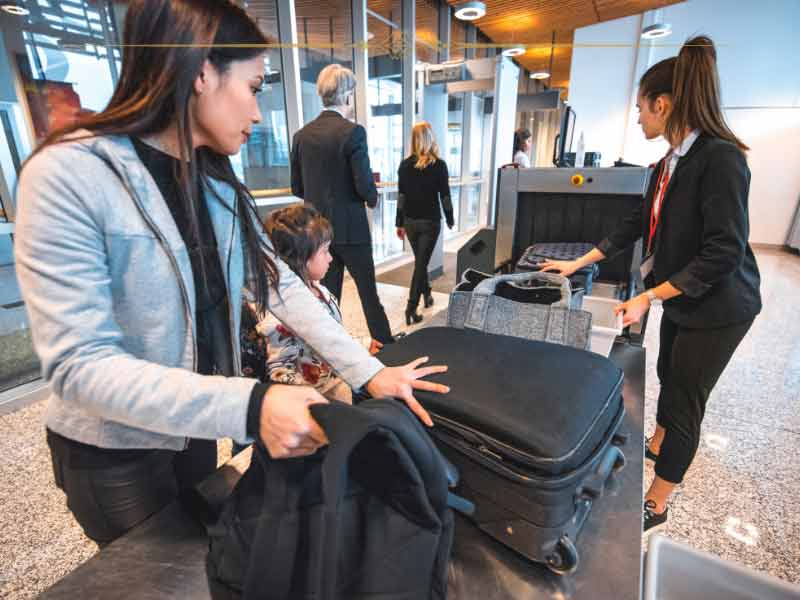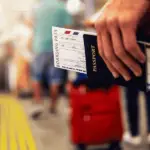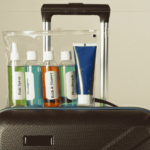Airport security remains one of the most stress-inducing aspects of air travel for many passengers. The seemingly unpredictable nature of Transportation Security Administration (TSA) screening procedures leaves travelers wondering why they occasionally face additional scrutiny. While TSA maintains that many secondary screenings occur randomly, numerous specific triggers can flag passengers for enhanced security measures. Understanding these less obvious reasons might help frequent flyers navigate the security process more efficiently and with reduced anxiety.

From travel patterns to wardrobe choices, numerous factors beyond obvious security concerns can influence your screening experience. This comprehensive examination explores the lesser-known reasons TSA officers might select you for additional screening, along with practical insights for smoother airport security experiences.
International Travel Patterns That Raise Flags
Your travel history plays a significant role in determining your security screening level, particularly when your itinerary includes destinations categorized as high-risk by American authorities. The State Department regularly updates its travel advisory list, categorizing countries by perceived risk levels from Level 1 (Exercise Normal Precautions) to Level 4 (Do Not Travel).
Travelers who visit countries designated as Level 3 or Level 4 often experience heightened scrutiny upon their return to the United States. This increased attention may persist across multiple future trips, regardless of destination. The security system flags these travel patterns based on the assumption that exposure to high-risk regions warrants additional verification measures.
Nations experiencing political instability, ongoing armed conflicts, or significant terrorist activity typically receive higher risk designations. These classifications fluctuate based on current global events and intelligence assessments, meaning a previously safe destination might suddenly trigger enhanced screening if conditions deteriorate.
This screening mechanism operates largely behind the scenes through passenger name record (PNR) data and travel manifests. Travelers often remain unaware of these designations until they receive boarding passes marked with “SSSS” (Secondary Security Screening Selection) or experience consistently heightened scrutiny across multiple trips following visits to certain regions.
For frequent international travelers, this pattern-based selection can become particularly frustrating. The system may continue flagging individuals for enhanced screening long after their return from high-risk regions, creating ongoing travel disruptions without clear resolution timelines.
Name Similarity Issues in Security Databases
The screening mechanisms employed by TSA rely heavily on name-matching technology to identify potential security risks. This system, while necessary for tracking individuals of concern, creates complications for travelers whose names resemble or match those appearing on various security watchlists, most notably the no-fly list maintained by the FBI’s Terrorist Screening Center.
This phenomenon, commonly referred to as a “false positive match,” affects thousands of travelers annually, causing consistent delays, secondary screenings, and occasionally even boarding denials. The challenge stems from both the structure of common naming conventions across cultures and the technical limitations of matching algorithms.
Individuals with common surnames face this issue disproportionately, particularly when their first names also appear frequently in the general population. The problem becomes more pronounced for travelers with names common in regions associated with heightened security concerns, creating an unfortunate demographic disparity in screening experiences.
The security database matching system employs varying degrees of specificity. Some matches occur based on exact name correspondence, while others trigger based on phonetic similarities or partial matches. Birth dates and other identifying information theoretically help differentiate between individuals with identical or similar names, but these verification steps typically occur during the secondary screening process rather than preventing the initial flag.
This name-matching challenge extends beyond American security databases. International watchlists maintained by other nations and shared through security cooperation agreements can similarly flag travelers, creating situations where individuals face enhanced screening when entering certain countries but not others.
Behavioral Analysis Programs at Security Checkpoints
Beyond the technological screening systems, TSA employs human observation techniques through specialized personnel trained in behavior detection. These Behavior Detection Officers (BDOs) work within security checkpoints, analyzing passenger conduct for indicators potentially associated with higher risk levels.
The Screening of Passengers by Observation Techniques (SPOT) program represents one of the more controversial aspects of TSA’s security approach. This system operates on the premise that certain behavioral patterns might indicate heightened stress, deception, or security threats. While the complete list of monitored behaviors remains classified for obvious security reasons, publicly available information suggests the system tracks dozens of specific actions and expressions.
Common behaviors that might contribute to higher scrutiny include excessive sweating, fidgeting, avoiding eye contact with security personnel, checking watches repeatedly, or displaying unusually stiff posture. These indicators, when observed in isolation, rarely trigger additional screening. However, when multiple behaviors accumulate or appear in conjunction with other risk factors, they may lead to enhanced security measures.
The program employs a point-based assessment system, with certain behaviors adding to a passenger’s risk score while other factors reduce it. Interestingly, the system includes demographic factors that can lower risk assessments, such as advanced age or traveling as part of a family unit.
Critics question both the scientific validity and the potential bias inherent in behavioral assessment approaches. Concerns center on the subjective nature of human observation and the risk that cultural differences in typical behavior patterns might be misinterpreted as suspicious activity. Passengers with social anxiety, communication disorders, or certain medical conditions may inadvertently display behaviors flagged by the system, leading to unwarranted additional screening.
Wardrobe Choices That Complicate Security Screening
While rarely acknowledged in pre-travel planning, clothing selections significantly impact security screening experiences. Certain garment types consistently trigger additional screening due to their interference with security technology or their potential to conceal prohibited items.
Full-body scanning technology, now standard at most airport checkpoints, works by detecting anomalies beneath clothing. Loose-fitting or voluminous garments create challenges for these systems, frequently generating unclear images that require manual verification. Oversized hoodies, flowing ponchos, maxi dresses with significant volume, and baggy cargo pants commonly trigger secondary screenings for this reason.
Certain fabrics and materials present particular challenges for scanning equipment. Metallic threads, sequins, heavily embellished garments, and clothes containing metallic paints or prints often register as potential concerns, necessitating manual inspection. Even undergarments with underwire supports or metallic embellishments can trigger additional screening.
Layered clothing presents another common trigger for enhanced security measures. Multiple clothing layers might appear suspicious on scanning equipment, particularly when worn in weather conditions that don’t warrant such attire. Travelers wearing multiple shirts, jackets, or pants simultaneously almost invariably face additional screening.
Headwear presents particular screening challenges, especially items that cover significant portions of the face or head. Religious head coverings receive specific accommodation protocols that typically involve private screening areas, but still require verification procedures that extend beyond standard security measures.
Footwear selection similarly influences screening experiences. Boots extending above the ankle, shoes with substantial metal components, and footwear with exceptionally thick soles frequently trigger additional inspection. While most domestic passengers must remove shoes during standard screening, certain footwear types will require additional examination even after removal.
Accessories represent another significant trigger category. Large jewelry pieces, especially those containing substantial metal components, consistently activate screening equipment. Belt buckles with complex designs, watches with multiple metal components, and decorative hair accessories with metal elements similarly increase the likelihood of additional screening.
Unusual Items in Carry-On Luggage
The contents of carry-on luggage represent perhaps the most obvious trigger for enhanced security measures. While most travelers understand basic restrictions regarding liquids and sharp objects, numerous less obvious items routinely trigger additional bag inspections.
Electronic devices beyond common items like laptops and smartphones frequently prompt secondary screening. Devices with unusual configurations, multiple external components, or extensive wiring often appear suspicious on scanning equipment. Travelers carrying specialized electronic equipment such as professional camera gear, audio recording devices, or scientific instruments regularly experience enhanced luggage screening.
Food items create consistent screening challenges, particularly dense organic materials that can appear suspicious on scanning equipment. Cheeses, certain baked goods, and compact food items frequently resemble potentially dangerous materials when viewed through security scanners. Travelers bringing regional specialties or homemade food items often face additional scrutiny.
Common objects with unusual shapes or densities similarly trigger enhanced screening. Items with cylindrical components particularly concern security personnel due to their potential resemblance to explosive devices. Everyday objects like musical instruments, specialized tools, or artistic supplies often require additional verification due to their atypical appearances on scanning equipment.
Souvenir items present special challenges, particularly those resembling weapons or restricted items. Decorative replicas, historically themed items, or culturally significant objects frequently trigger additional screening, especially when their appearance on scanning equipment creates ambiguity about their actual nature.
The screening process becomes particularly stringent for items resembling weapons, regardless of their actual functionality or purpose. Toys with realistic weapon appearances, movie prop replicas, or novelty items shaped like prohibited objects invariably receive intense scrutiny. These items may be permitted after verification, but will almost certainly result in additional screening processes.
Medical Conditions and Security Screening
Travelers with certain medical conditions or equipment regularly experience enhanced security screening due to the limitations of standard security technology. While TSA has established protocols for accommodating medical necessities, these accommodations typically involve alternative screening procedures rather than exemptions from security requirements.
Medical implants, particularly those containing metal components, frequently trigger scanning equipment. Joint replacements, pacemakers, insulin pumps, and similar devices typically result in additional verification procedures. While TSA officers cannot require disclosure of specific medical conditions, travelers often find that proactively informing security personnel about medical implants facilitates more efficient screening.
Medical equipment carried in luggage consistently prompts additional screening. Portable oxygen concentrators, CPAP machines, specialized medical devices, and equipment with batteries or electronic components undergo verification procedures beyond standard luggage screening. The presence of prescription medications, particularly in liquid form or in quantities exceeding typical restrictions, similarly triggers enhanced security measures.
Travelers with mobility limitations or physical disabilities encounter specialized screening protocols that frequently extend beyond standard procedures. Wheelchairs, prosthetic limbs, and mobility aids undergo detailed inspection, often including explosive trace detection testing and manual examination. While these procedures arise from security necessity rather than discriminatory intent, they nonetheless create additional complexity for travelers with disabilities.
Less visible medical conditions sometimes trigger behavioral flags within security screening processes. Individuals experiencing anxiety, communication disorders, or neurological conditions might inadvertently display behaviors monitored by security personnel. These situations can be particularly challenging for travelers whose medical conditions aren’t immediately apparent to observers.
Documentation Irregularities That Raise Concerns
Travel documentation issues represent another significant trigger for enhanced security measures. While obvious problems like expired passports typically prevent travel entirely, subtle discrepancies often result in additional verification procedures rather than outright travel denials.
Name inconsistencies across travel documents frequently prompt additional scrutiny. Individuals whose legal names include special characters, hyphens, or multiple components sometimes encounter database matching issues when these elements appear differently across various documents. Similarly, travelers who have legally changed their names may face verification challenges if their identification documents reflect different naming conventions.
Recently updated identification documents sometimes trigger additional verification, particularly when physical characteristics have changed significantly from previous documentation. New passports, especially those issued shortly before travel, might prompt enhanced verification procedures to ensure authenticity and proper issuance.
Documentation from certain issuing authorities occasionally receives additional scrutiny based on security agreements between nations. Some countries’ passports undergo more rigorous verification based on document security features or concerns about potential forgery. These verification processes typically occur behind the scenes but can result in additional screening experiences for travelers.
Last-minute travel arrangements, particularly for international destinations, sometimes trigger security flags. Tickets purchased shortly before departure, especially for one-way international travel, might prompt additional verification procedures. These screening measures aim to verify the legitimacy of travel plans and ensure proper documentation for entry into destination countries.
Technological Glitches in Screening Systems
The sophisticated technological systems underlying airport security occasionally experience malfunctions that result in additional passenger screening. These technical issues, while frustrating for travelers, represent necessary redundancy measures within the security infrastructure.
Scanner calibration problems represent one common technical trigger for enhanced screening. When full-body scanners or baggage screening equipment operate outside normal parameters, security protocols typically default to manual verification procedures. These technical adjustments might affect numerous consecutive passengers as equipment undergoes recalibration.
Database connectivity issues occasionally prevent normal verification of passenger information. When security systems cannot access watchlist databases or verification systems in real-time, protocols typically require additional manual verification procedures until technical functionality resumes. These situations might affect entire security checkpoints rather than individual travelers.
Software updates and system transitions sometimes create temporary verification challenges. As security technology evolves, implementation periods for new systems or procedures occasionally result in higher rates of additional screening while personnel adjust to updated protocols. These transitional periods typically resolve as staff become familiar with new systems.
Random selection protocols, designed to prevent predictable security patterns, operate alongside these technological systems. Even when no specific flag or concern exists, a percentage of passengers undergo enhanced screening based on randomized selection algorithms. This randomization ensures that potential threats cannot reliably predict screening patterns or identify security vulnerabilities.
Navigating Enhanced Screening Efficiently
For travelers who consistently experience additional screening, several proactive measures can streamline the process. Understanding available resources and approaching security with appropriate preparation significantly reduces the stress associated with enhanced verification procedures.
The Department of Homeland Security Traveler Redress Inquiry Program (DHS TRIP) provides formal recourse for travelers experiencing persistent screening issues. This system allows individuals to submit documentation verifying their identity and distinguishing them from similarly named individuals on watchlists. While the redress process doesn’t guarantee elimination of all additional screening, it significantly reduces false-positive matches for most participants.
Trusted Traveler Programs, including Global Entry, TSA PreCheck, and NEXUS, provide expedited screening options for pre-vetted travelers. The comprehensive background checks required for these programs typically resolve most common screening triggers, though participants may still occasionally experience enhanced security measures based on random selection or specific concerns.
Arriving at security checkpoints with additional time accommodates potential enhanced screening without creating travel disruptions. This preparation proves particularly valuable for travelers with known medical equipment, unusual carry-on items, or previous experiences with additional screening.
Dressing strategically for security screening significantly reduces the likelihood of clothing-related screening triggers. Simple wardrobe adjustments—avoiding excessive metal accessories, selecting fitted rather than loose garments, and choosing easily removable layers—minimize common screening complications.
Understanding available accommodations for medical conditions or disabilities enables travelers to request appropriate assistance in advance. Most airports provide specialized screening procedures for travelers with medical needs, but these accommodations typically require advance notification or on-site requests.
Conclusion
Airport security continues to evolve in response to emerging threats, technological capabilities, and passenger feedback. The apparently unpredictable nature of enhanced screening often reflects this ongoing adaptation rather than arbitrary selection processes. While certain screening triggers remain consistent, the specific implementation of security measures adjusts continuously based on current risk assessments and available resources.
For most travelers, enhanced security screening represents an occasional inconvenience rather than a persistent challenge. Understanding the factors that might trigger additional verification helps demystify the process and reduces associated stress. Approaching security with appropriate preparation, including knowledge of available resources for frequent travelers, transforms potential frustration into manageable routine.
The balance between security effectiveness and passenger convenience remains an ongoing consideration within aviation security planning. As screening technology advances and risk assessment becomes increasingly sophisticated, the passenger experience continues to improve without compromising essential security objectives. This evolution promises more targeted screening approaches that focus resources on genuine concerns while streamlining the process for low-risk travelers.




